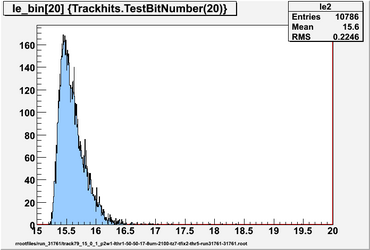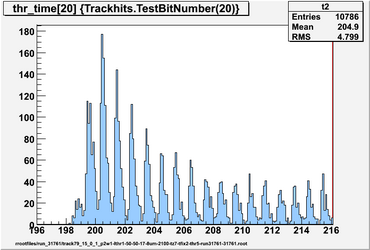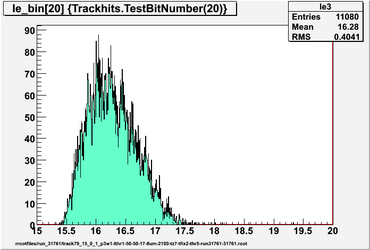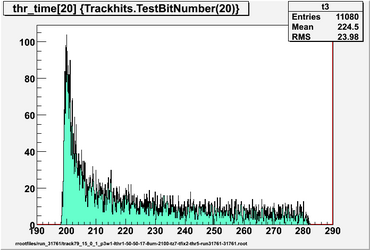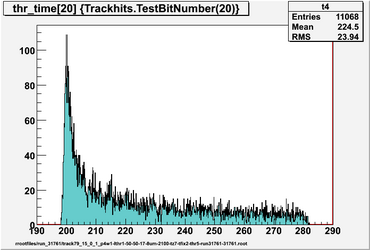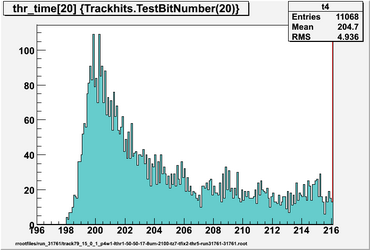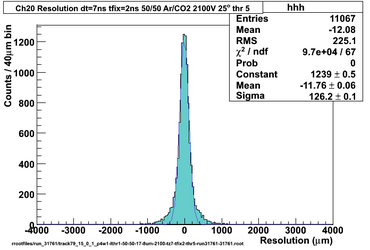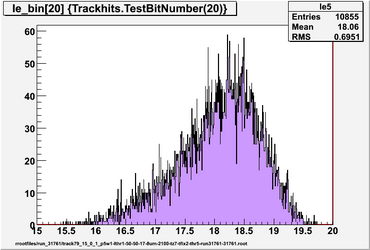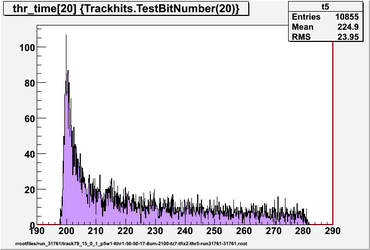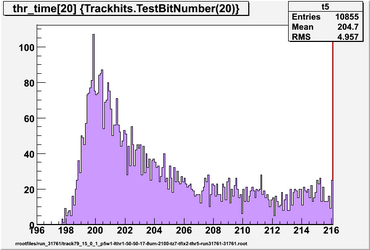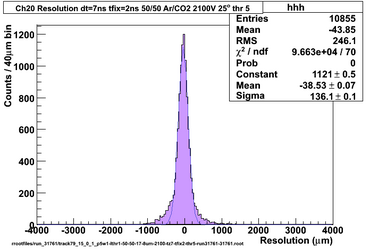CDC prototype more drift times
Drift time histograms for various local pedestal points
The pedestal lead time is the # samples before the hit threshold crossing where the pedestal window ends. Usually I used 3 samples with a pedestal window 1 sample (ie the pedestal value is equal to the fADC value 3 samples before the hit threshold is exceeded). Some experimenting showed that the best points to use for a 5-sigma hit threshold are a window of 1 or 2 samples, ending 3 bins before the hit threshold crossing.
Also see CDC_prototype_more_on_timing
Le_bin is the timing threshold crossing in fADC samples (8ns each) and it is relative to the hit threshold crossing time. Le_bin=0 corresponds to (15 + pedestal lead) samples before the hit threshold crossing bin. ie the drift time in bins is hit threshold crossing bin - 15 - pedestal_lead_time + le_bin. The sample values sent to the upsampling algorithm start at le_bin=0. 20 + pedestal_lead_time values are used so the upsampling data end 5 samples after the hit threshold crossing bin.
851,836,426,871
